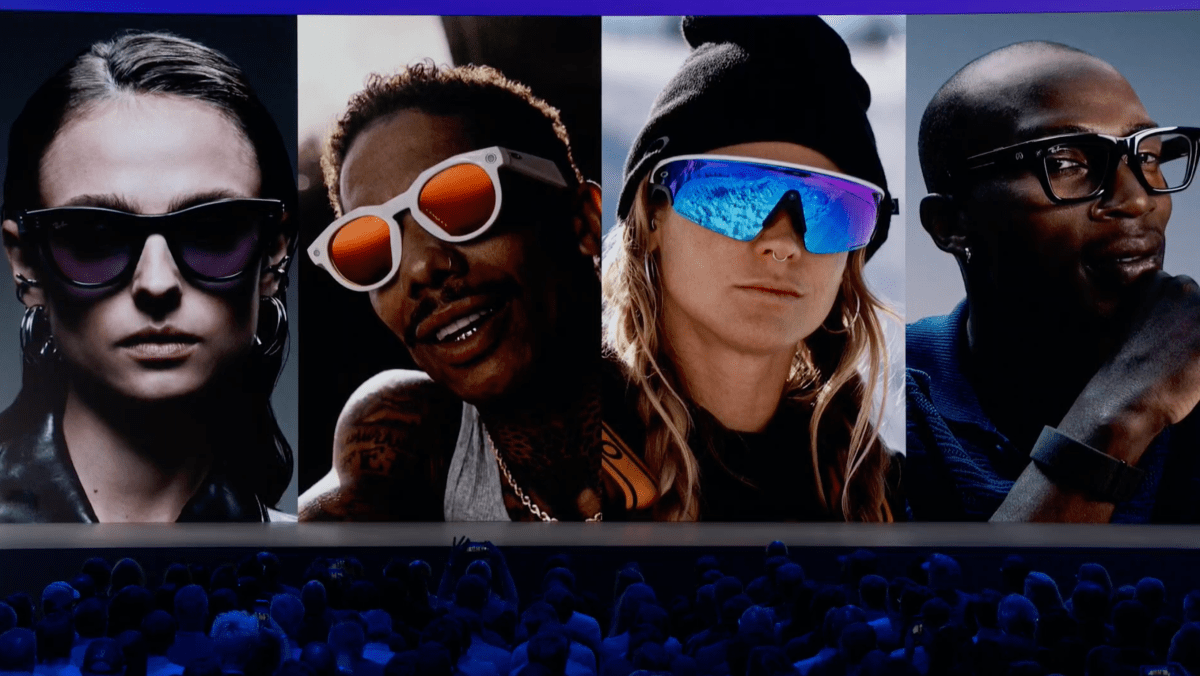Meta Unveils Ray‑Ban Display Smart Glasses Aiming to Shift Away from Smartphones

Key Points
- Meta unveiled the Ray‑Ban Display smart glasses as a potential successor to smartphones.
- CEO Mark Zuckerberg said the glasses aim to preserve human presence lost to phone screens.
- The glasses feature cameras, speakers, microphones, an AI assistant, and an offset display for apps and real‑time information.
- A companion Neural Band uses surface electromyography (sEMG) to interpret hand gestures as text input.
- Zuckerberg demonstrated a silent texting speed of about 30 words per minute.
- Reality Labs has invested in sEMG research since 2021, previously showcasing a prototype named Orion.
- Meta’s launch reflects a strategic push to compete with Apple and Google in the wearable market.
- The device’s silent, gesture‑based interface aims to offer a more natural way to interact in public settings.
Meta introduced its new Ray‑Ban Display smart glasses, positioning them as a replacement for smartphones. CEO Mark Zuckerberg emphasized that the glasses preserve human presence lost to phone screens. The device combines cameras, speakers, microphones and an on‑board AI assistant, while an accompanying Neural Band uses surface electromyography (sEMG) to let users write messages without speaking. Zuckerberg demonstrated a texting speed of about 30 words per minute. The launch highlights Reality Labs' ongoing investment in sEMG research and underscores Meta’s ambition to compete with Apple and Google in the wearable market.
Vision Beyond the Smartphone
At a high‑profile event in San Francisco, Meta presented its latest hardware effort, the Ray‑Ban Display smart glasses. CEO Mark Zuckerberg framed the product as a way to restore the sense of presence that he believes has eroded as people spend more time looking at phone screens. He suggested that the glasses could eventually become the primary device for everyday digital interaction, challenging the dominance of smartphones from rivals such as Apple and Google.
Technology Overview
The Ray‑Ban Display integrates multiple sensors and output components, including cameras, speakers, microphones and an on‑board artificial‑intelligence assistant. Its display is positioned off‑center so that it does not block the wearer’s line of sight. The glasses can surface apps from Meta’s ecosystem—such as Instagram, WhatsApp and Facebook—alongside practical information like navigation directions and live translations.
Neural Band and Surface Electromyography
Accompanying the glasses is a wrist‑worn Neural Band that captures surface electromyography (sEMG) signals. This technology reads the electrical activity generated when a user moves their hand and fingers, allowing the system to interpret gestures as textual input. In the demonstration, Zuckerberg showed how users could “write” messages by holding their fingers together as if gripping a pen and forming letters in the air. He reported a texting speed of roughly 30 words per minute, compared with an estimated 36 words per minute on a typical smartphone and an average of 21 words per minute among research participants.
The Neural Band enables a silent, voice‑free texting experience, which Zuckerberg highlighted as useful in public settings where speaking aloud may be awkward. The band’s capabilities extend beyond simple text entry, hinting at more complex gesture controls that could rival existing wearable interfaces like those found on Apple Watches or Nintendo Joy‑Cons.
Research Investment and Future Outlook
Meta’s Reality Labs division, which has incurred substantial losses—reported as $70 billion since 2020—continues to invest heavily in sEMG research. The company has pursued this line of work since 2021 and previously showcased a larger prototype called Orion. The current Ray‑Ban Display and Neural Band represent the first consumer‑facing products that combine these technologies.
By launching the Ray‑Ban Display, Meta signals a strategic bet that the next generation of personal computing will shift from handheld screens to wearable optics. While the market’s response remains uncertain, the product aims to offer a more natural and less intrusive way to stay connected, aligning with Meta’s broader vision of a more present and socially engaging digital experience.